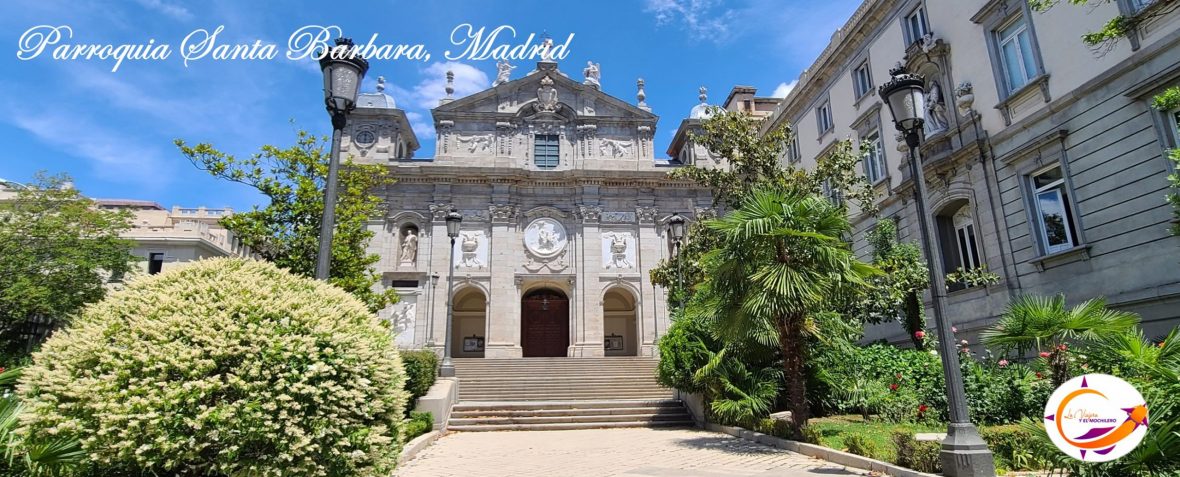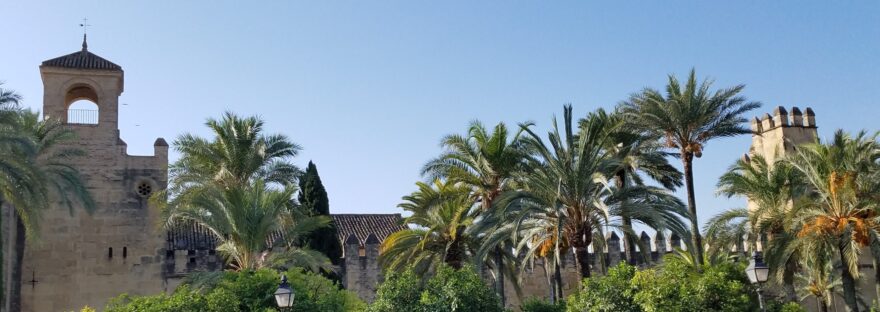The first time in the Andalusian city of Cordoba, we were unable visit its Alcazar or castle, given it was Monday and was closed. We regretted it very much and at that time decided to concentrate viewing its exterior. We were very struck by its walls, high and very sober, a very simple exterior architecture, military type. It has an almost square shape, with a tower at each of its four corners. At first glance, the palms and trees in the foreground hides the structure and its beauty.
We peeked through the railings of a garden that is located to right side of the main entrance. When we observed the beauty peeking through the bars of those railings, we promised ourselves that we would return, and so we did. What awaited us inside exceeded all the beauty we had imagined.
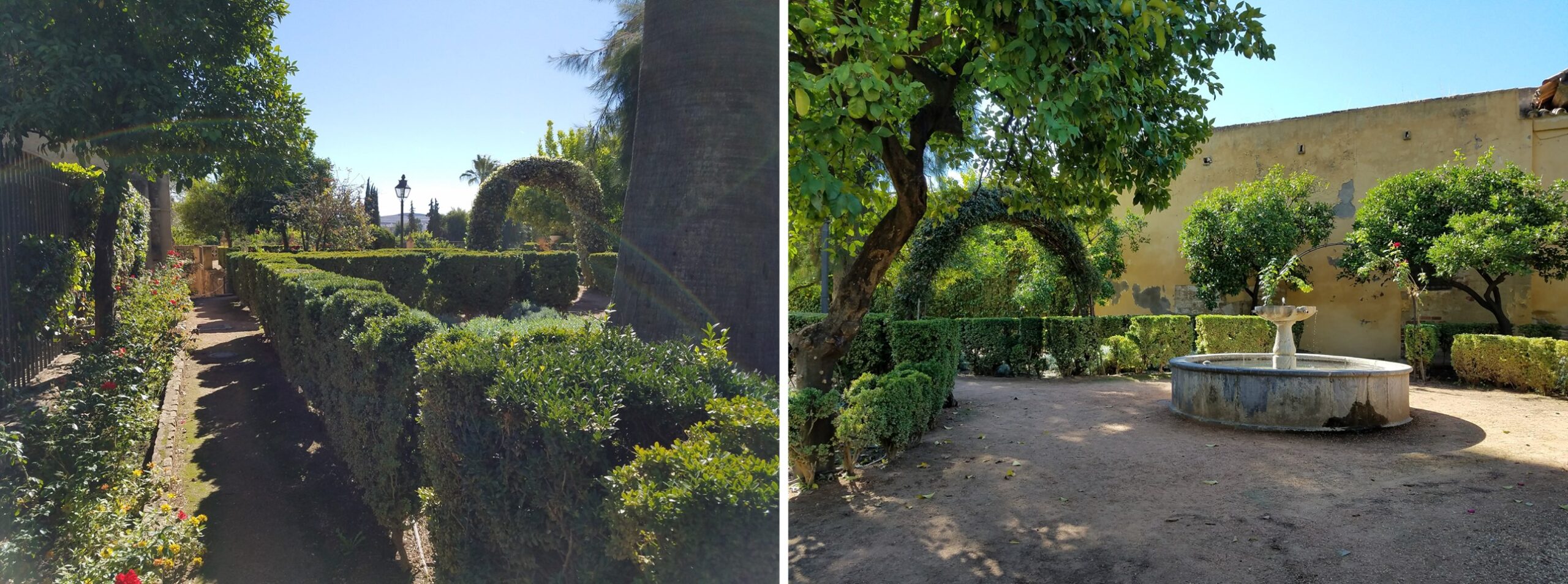
The “Alcázar de los Reyes Cristianos” (or The Christian Monarchs’ Castle) is located on the north bank of the Guadalquivir River. On this majestic site, Romans and Visigoths have coexisted with those of Arab origin, being the favorite place for the various rulers of the city. The monarch Alfonso XI of Castile ordered its construction in 1328 over the old Andalusian Alcazar, formerly the residence of the Roman governor as well as the customs house.
The Alcazar has been a Cultural Interest Asset since declared in 1931. It is part of the historic center of Cordoba, declared a World Heritage Site by UNESCO in 1994. It has become the second most visited paid monument in Cordoba after the Mosque Cathedral.
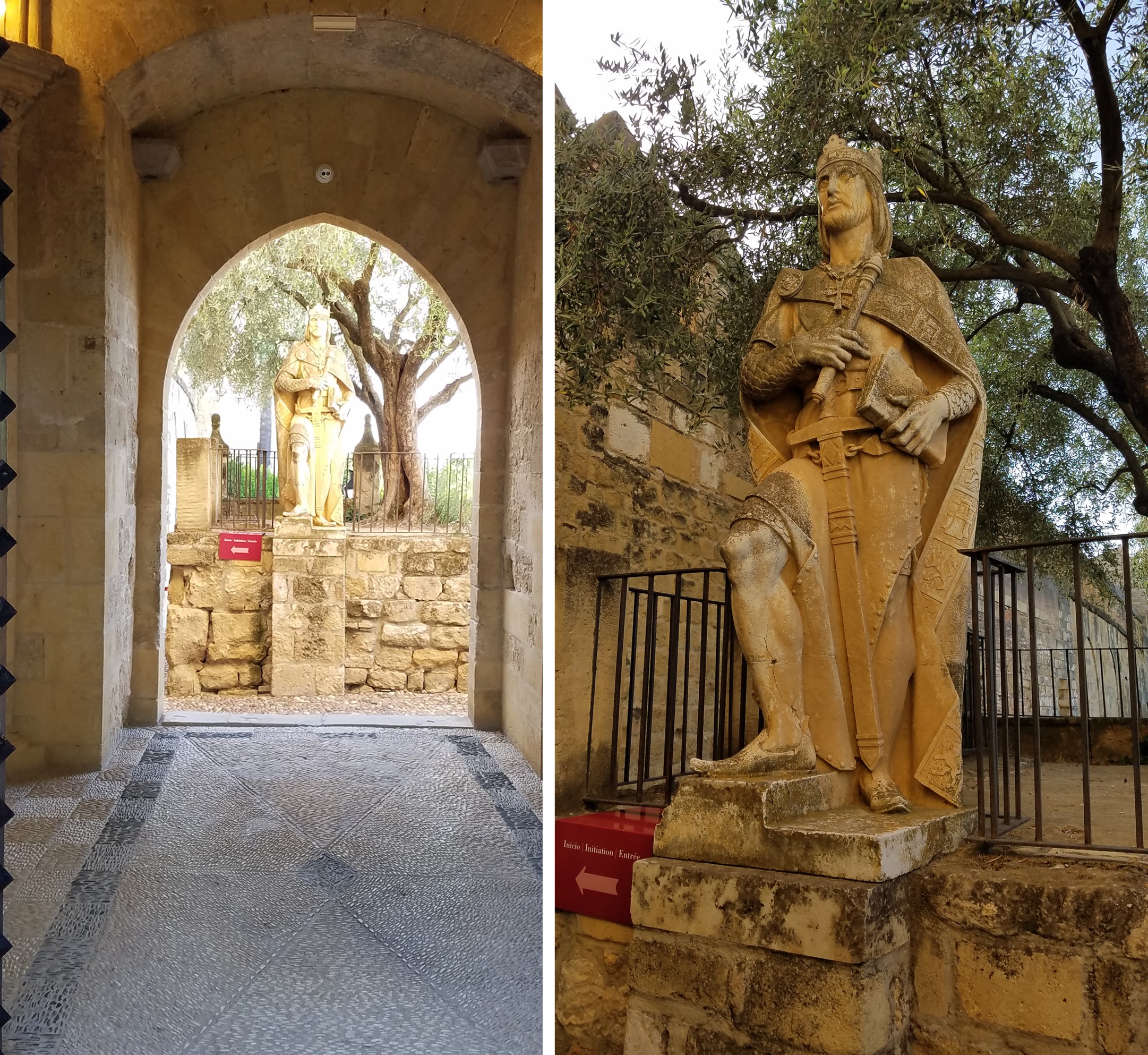
Once you enter through gateway of the Tower of the Lions, we are greeted by a statue of Alfonso X the Wise made by Juan Polo Velasco in 1965.
In one of the first galleries accessed, a pagan sarcophagus from the year 225 AD is exhibited. It is a familiar burial encasement made from a block of Carrara marble, richly carved on three of its four sides. It was found in Cordoba in 1958 in the “Huerta de San Rafael del Brillante”. The main motif on its front is the door to Hades or the afterlife that appears ajar.
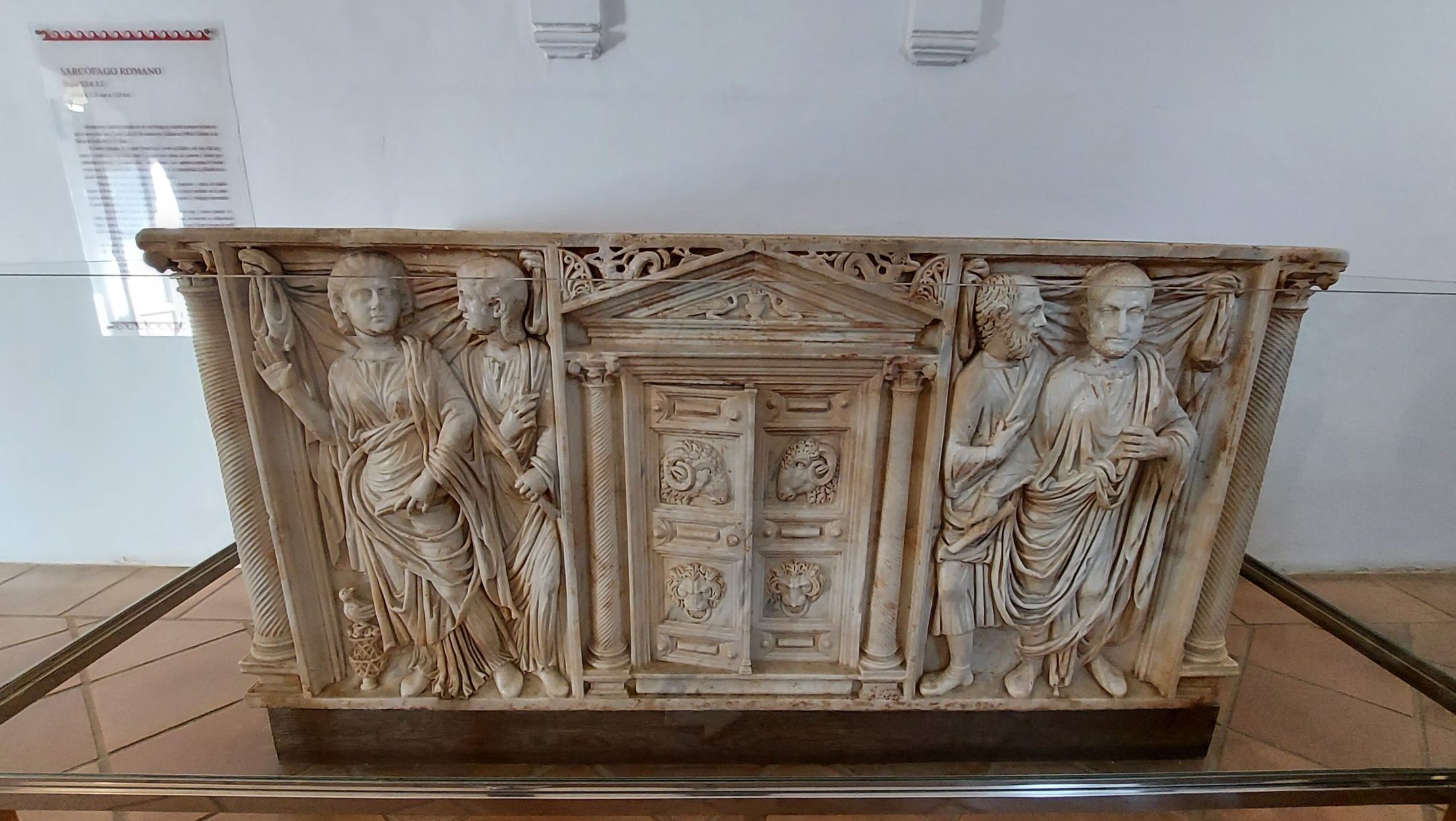
Our path continued to the Hall of Mosaics, where eight impressive Roman mosaics are exhibited, found between 1958-59 during remodeling works in the “Plaza de la Corredera”. These mosaics date from the 2nd and 3rd centuries, and were part of a Roman domus. Given the Alcazar was also being restored at the time, it was decided to move eight of the twelve works to this old chapel as decoration and since then it has been called the Hall of the Mosaics.
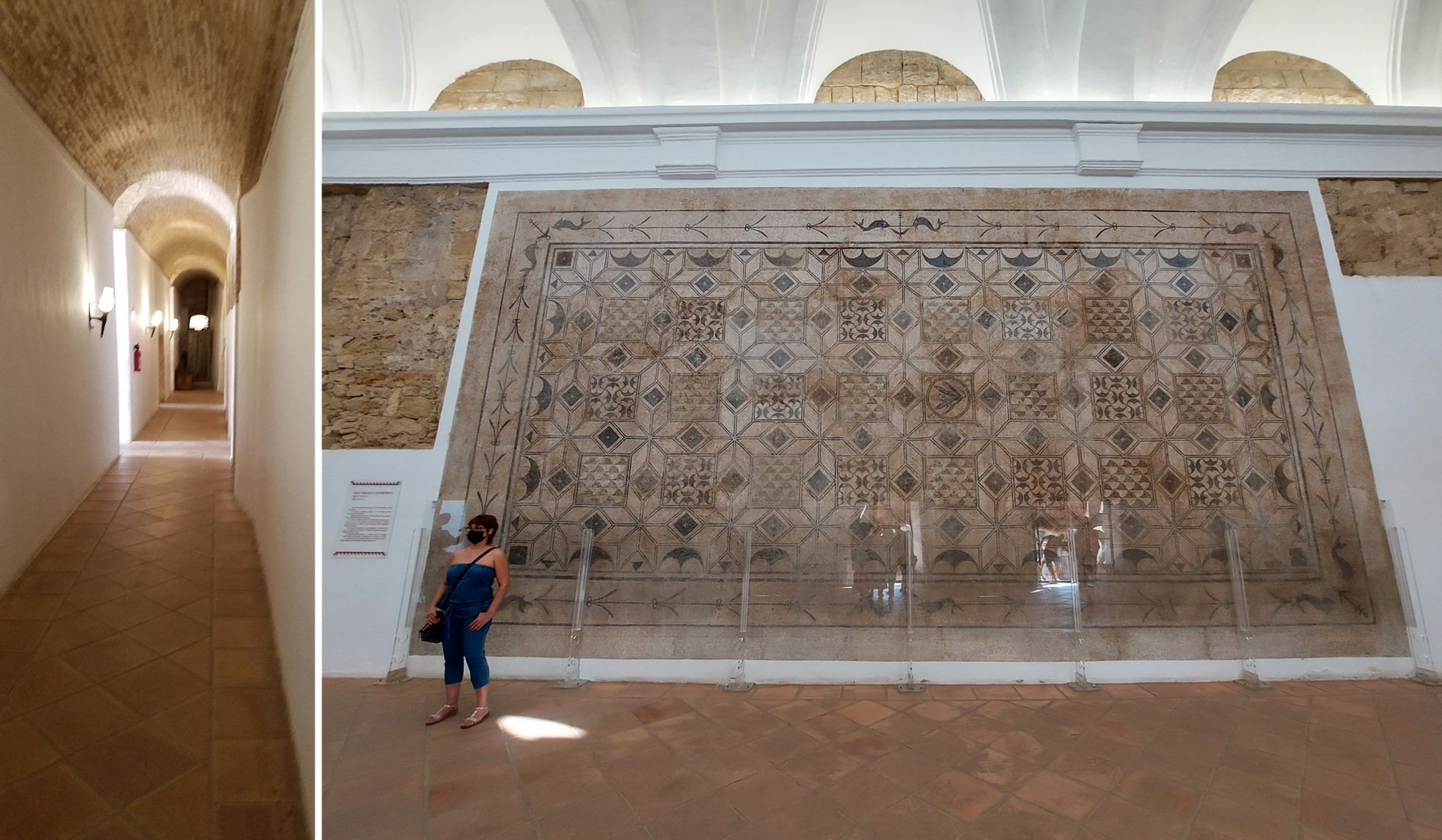

Beneath the Hall of the Mosaics are the Royal Baths of “Doña Leonor” (closed to public viewing during our visit), mistress of Alfonso XI, with whom he had ten illegitimate offspring. These baths in the “Mudejar” style, have skylights in the shape of an eight-pointed star. The structured consists of four rooms: dressing room, cold room, warm room and hot room. The boiler and the furnace, which supplied hot water to the baths, were located under the Homage Tower or “Torre del Homenaje”.
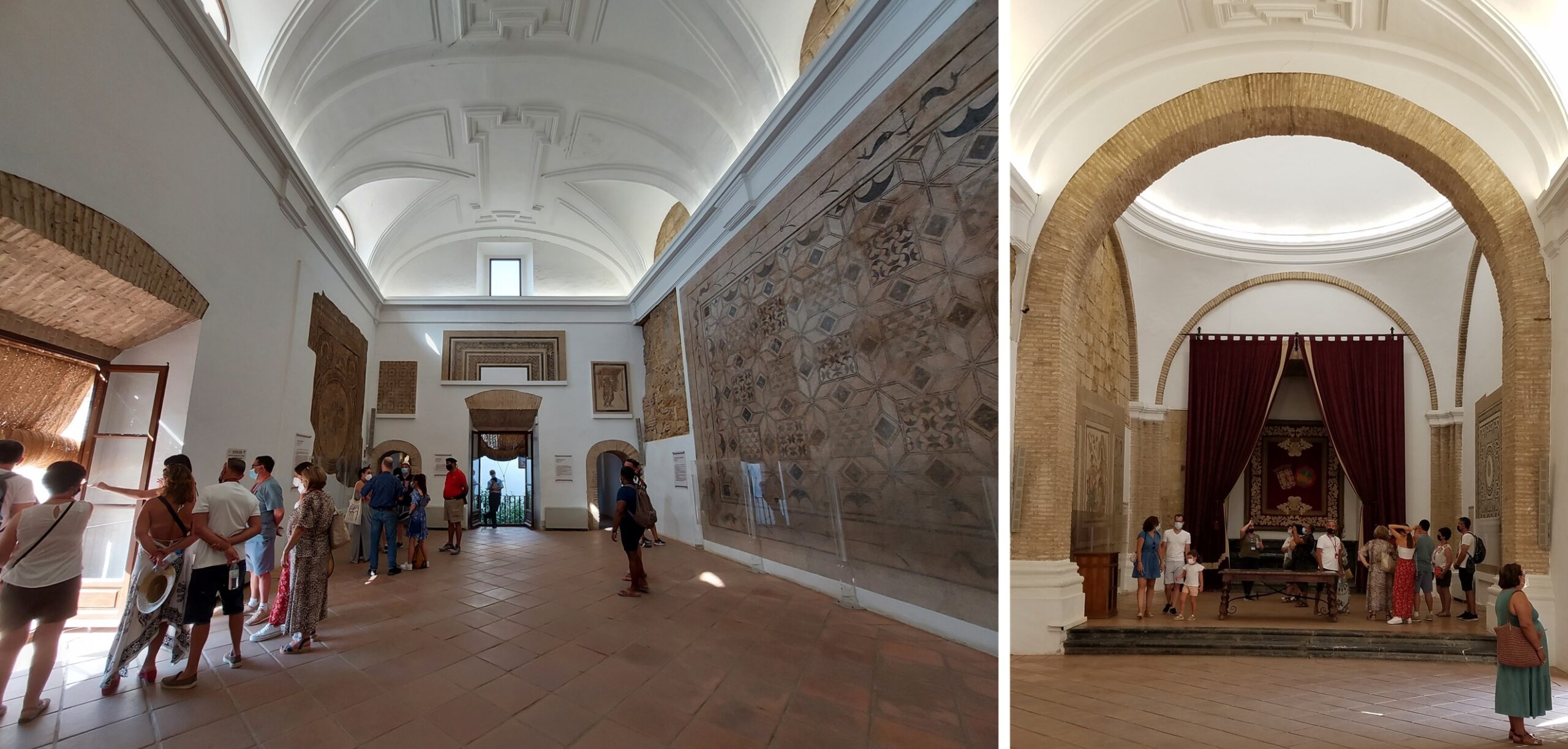
As mentioned previously, the Alcazar has four towers, giving the building practically a square shape.
- The “Torre del Homenaje”, with an octagonal floor plan, is located in the northeast corner. Its name comes from the oaths that were sworn in this place to protect the Alcazar. More recently, it was known as the Clock Tower because of a clock that was later dismantled in the early twentieth century.
- The squared Tower of the Lions, is located in the northwest corner. At the base of this tower is currently the visitors gateway, although this access was opened in 1662. This is the oldest tower, dating to the 13th century. It gets its name from the lion-shaped gargoyles at the top.
- The Tower of the Inquisition, circular in form, is located in the southwest corner. It receives its name because for centuries it served as the archive of the Court of the Holy Inquisition. It was also known as the Tower of the Gardens.
- The squared “Torre de la Paloma” is located in the southeast corner. The original tower was demolished in the mid-19th century, and the present tower is a reconstruction dating to the second half of the 20th century. It was also known as the Tower of the “Vela”.
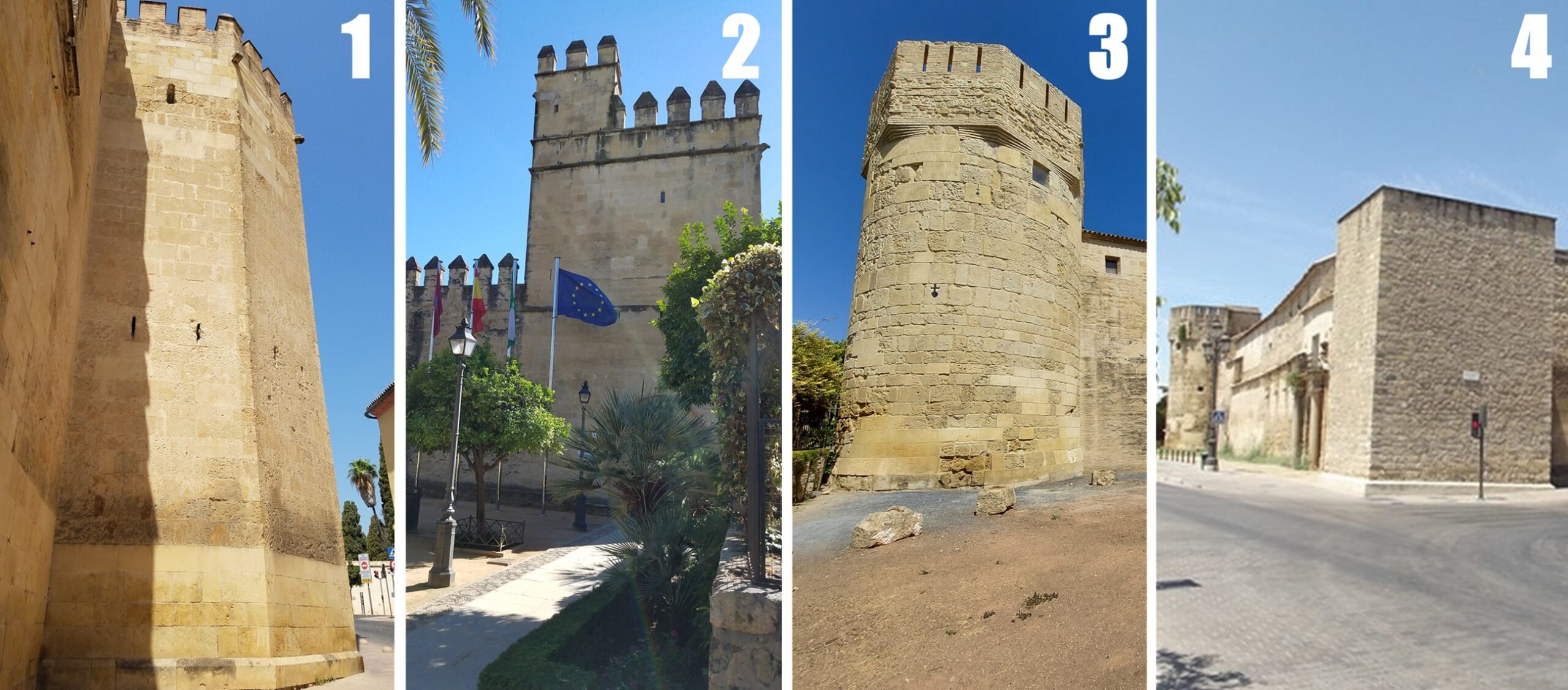
The “Alcázar de los Reyes Cristianos” has two courtyards but it was the Mudejar, located on its western side that most caught our attention given its great beauty. It is the courtyard that has best preserved its original layout, since, during the restoration of the mid-twentieth century, after removing the sand that covered the old prison courtyard and about a meter deep, the original structure was revealed. It has a square floor plan and is surrounded by arcaded galleries. The courtyard has in its center a fountain and two ponds located on both sides of it that invite visitors to cool off and relax.

The other courtyard, the “Patio de las Mujeres” (the Women’s Courtyard) was also known as the Eastern Courtyard, due to its orientation within the complex. It receives its name from the time in which the Alcazar was used as a prison, since it was this courtyard that housed the women’s section of the prison.
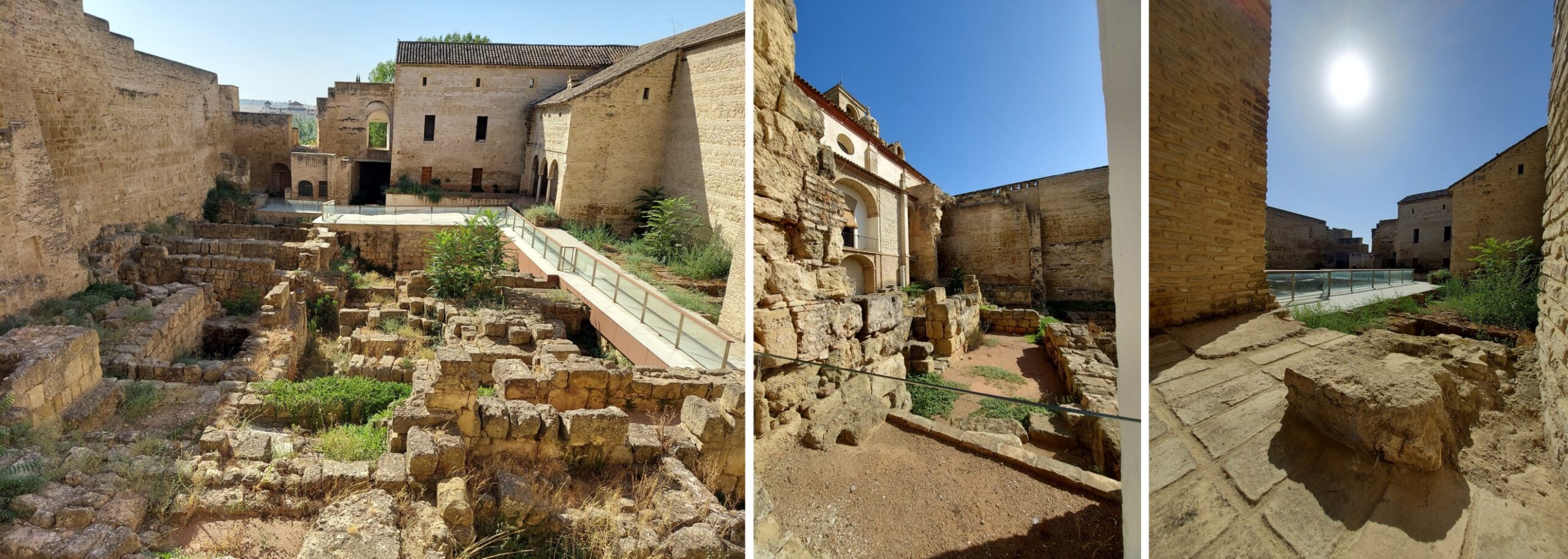
The gardens that we find in the Alcazar are the result of the transformation of the old “Huerta (garden) del Alcazar”. An area of approximately 55,000m² was converted into beautiful gardens with palm trees, cypresses, orange and lemon trees, elegantly surrounding fountains and ponds. The gardens are organized in three levels: the High Garden (Jardín Alto), the Middle Garden (Jardín Medio) and the Low Garden (Jardín Bajo).
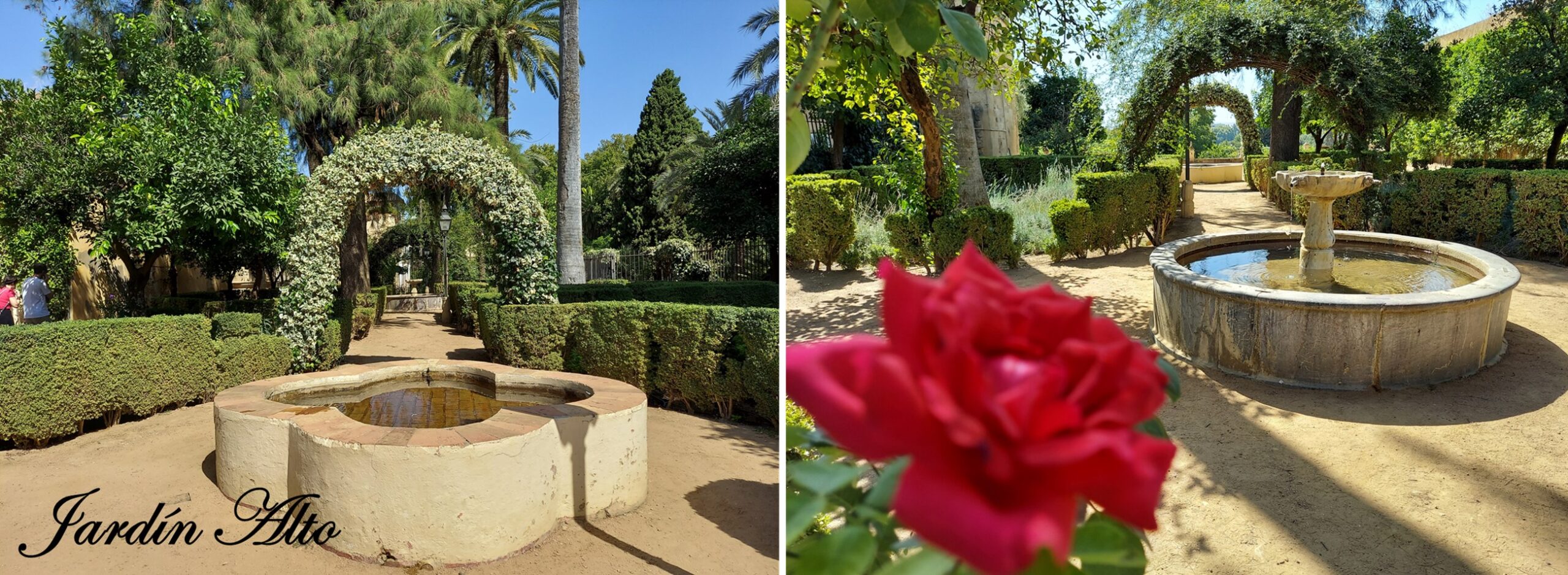

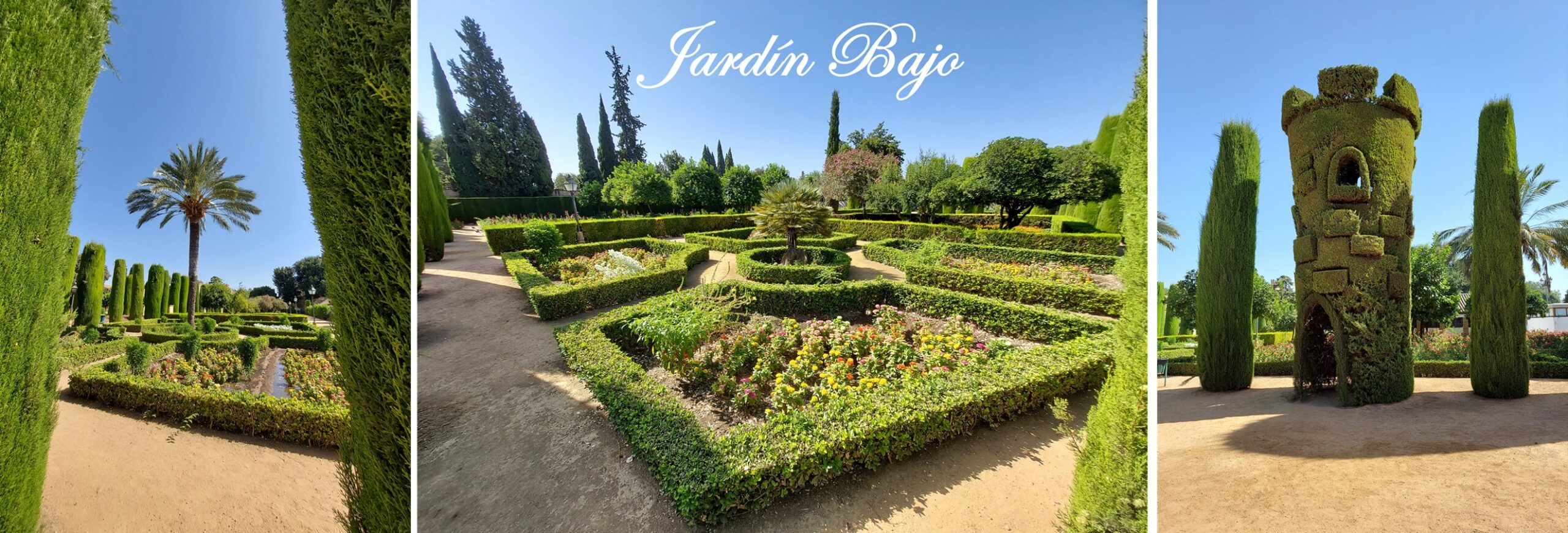
In addition, one of the views that we consider very beautiful is the “Paseo de los Reyes”, a promenade bordered by a row of cylindrical cypress trees and divided in two by two narrow ponds. On this promenade there are several sculptures of the Castilian monarchs who built the Alcazar, located on pedestals scattered among the hedges. The walk ends with the sculpture of the Catholic Monarchs receiving Christopher Columbus.
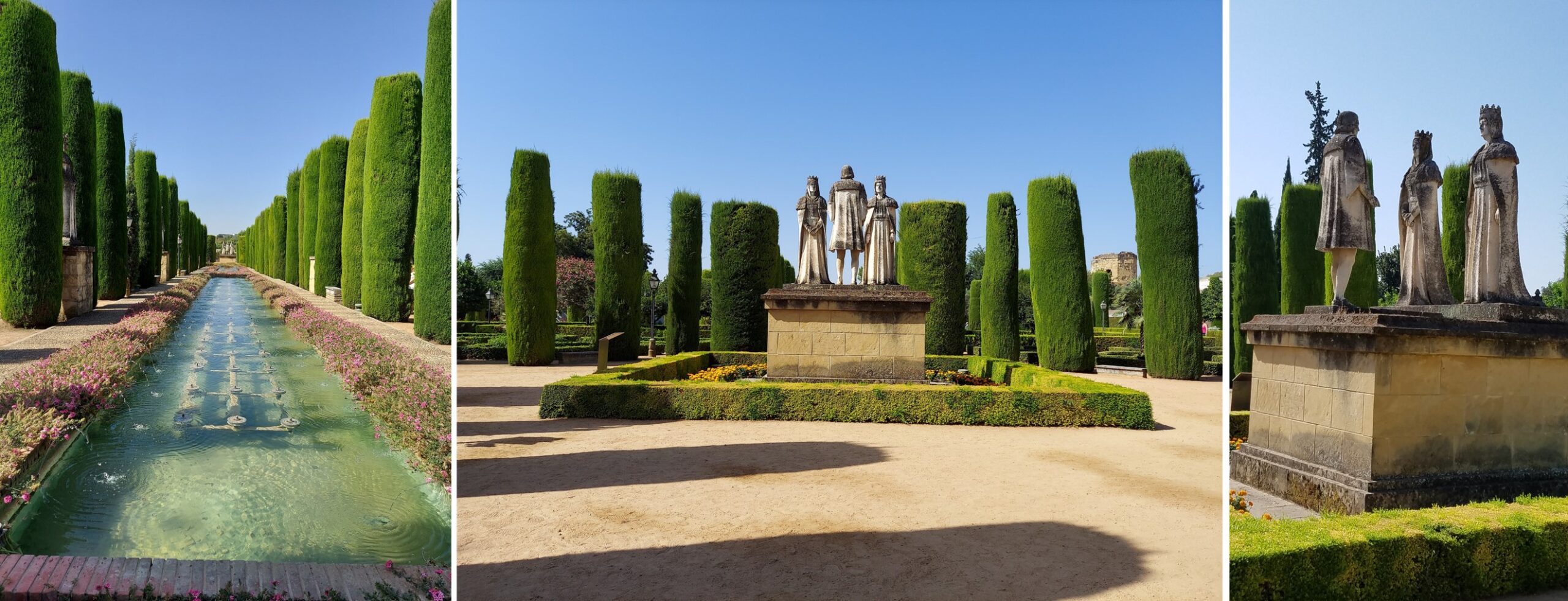
Today, the gardens are still watered via the Roman aqueduct “Aqua Fontis Aureae” that brings water from “Sierra Morena”. It is the stone fountain that receives the water from the sierra, which then falls into the first of the pools, continuing to other pylons and fountains until finally reaching the end of the gardens.
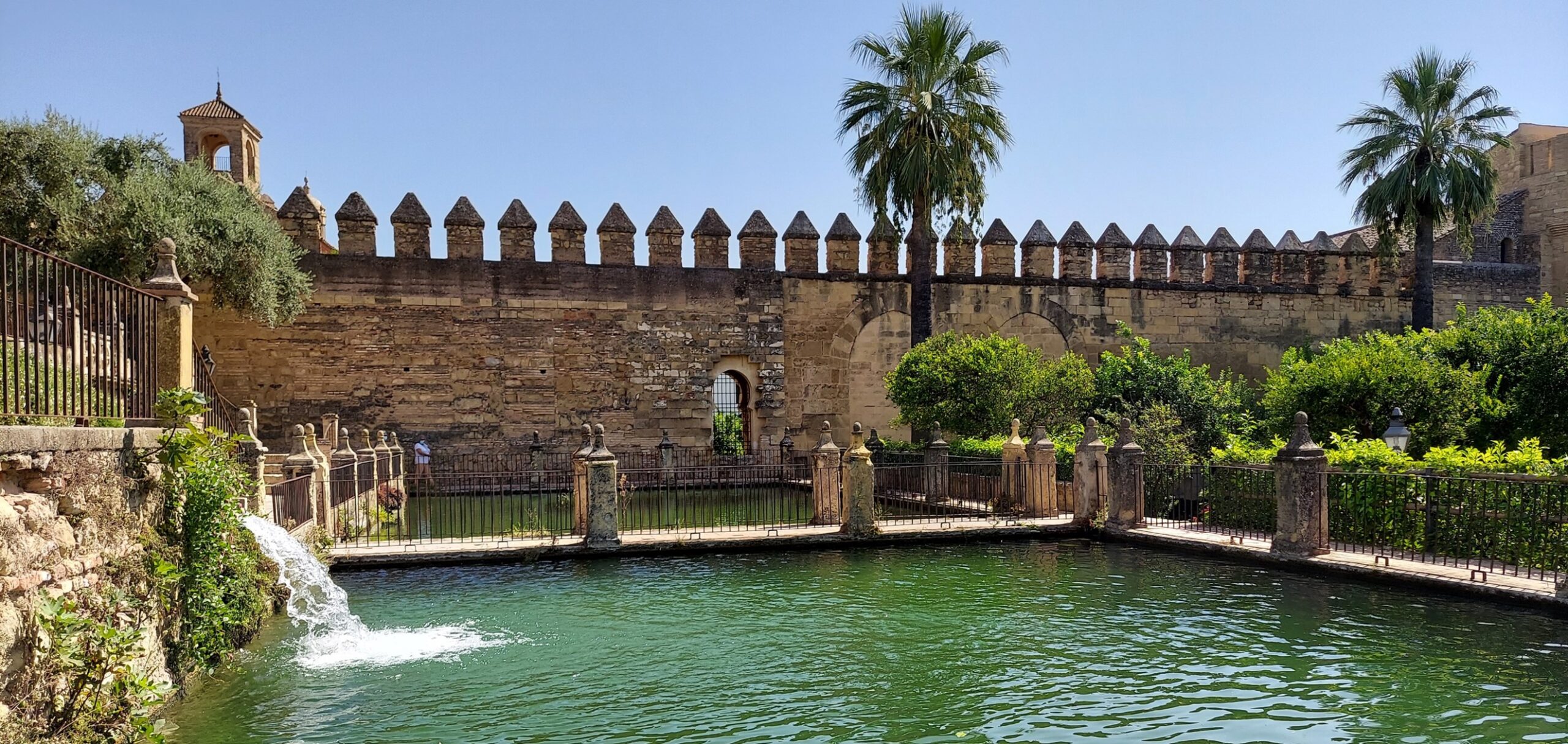
It was not until 1951, when Cordoba became part of a league of the cities that had maintained some relationship with Isabella the Catholic. The then mayor, Antonio Cruz Conde decided to recover this space for the citizens and approved a restoration project which was supported by the Royal Academy of Cordoba.
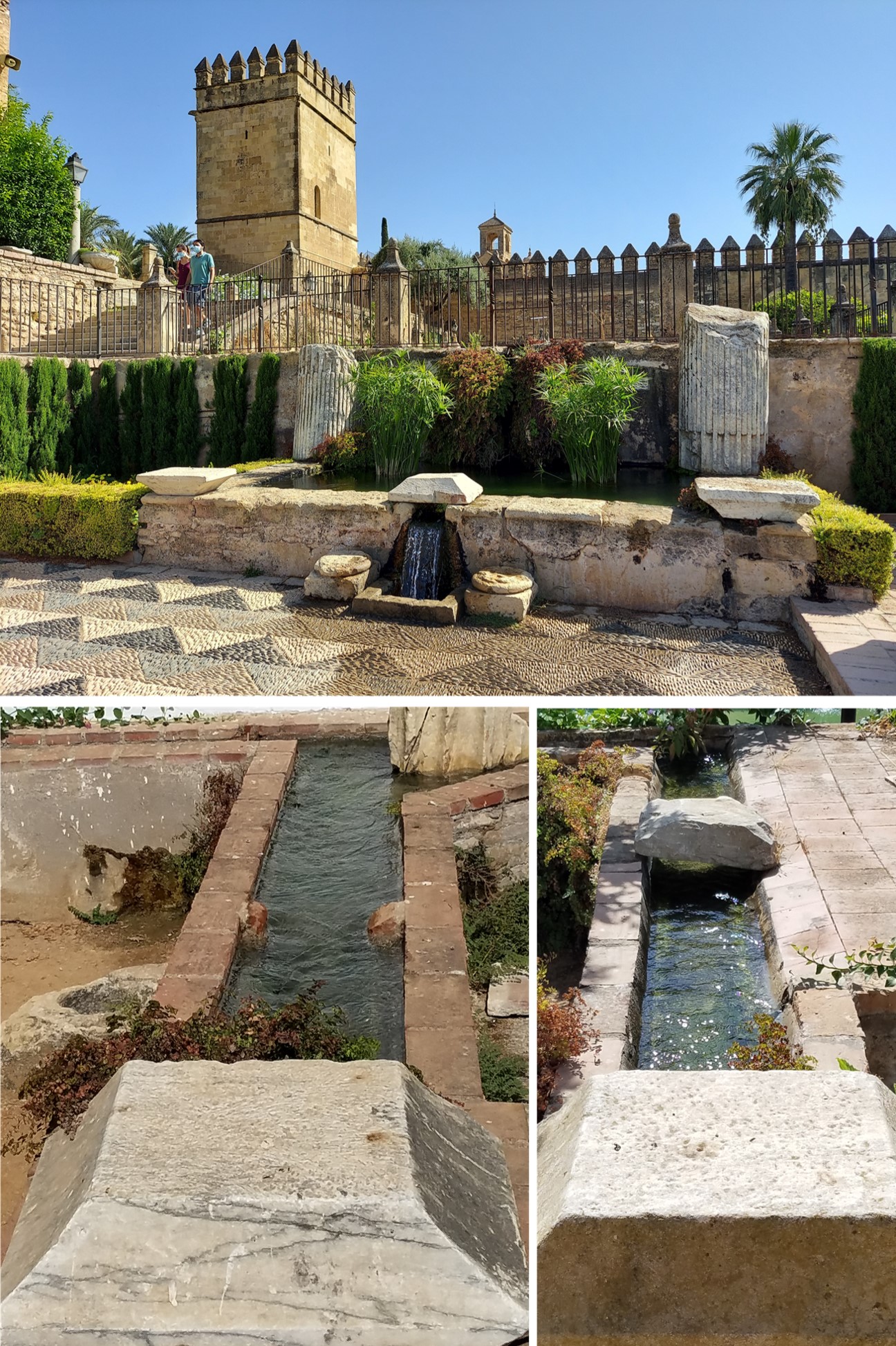
Currently, the Alcazar is the venue for different municipal events, such as the celebration of civil weddings, as well as venue and exhibition of various presentations.

At the end of this beautiful tour, we looked at each other to say, we made it! We passed those gates through which we peeked through about five years ago, to enjoy the different spaces, surrounded by ponds, fountains and beautiful gardens of the “Alcázar de los Reyes Cristianos” of the beautiful city of Cordoba.

Sources consulted:
https://es.wikipedia.org/wiki/Alc%C3%A1zar_de_los_Reyes_Cristianos
https://www.turismodecordoba.org/alcazar-de-los-reyes-cristianos
https://alcazardelosreyescristianos.cordoba.es/?id=600
